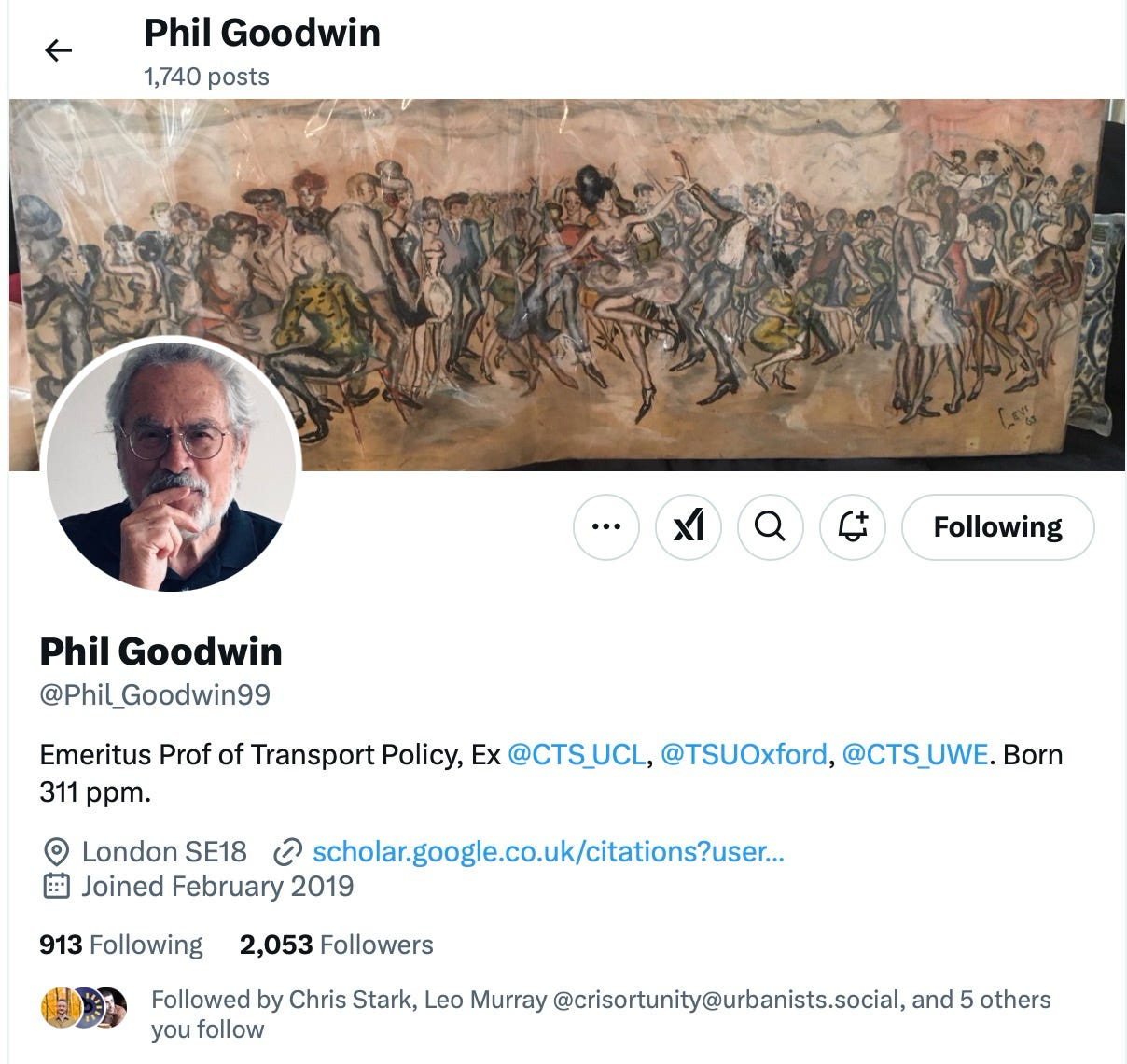How people react to traffic reduction schemes
Turns out we are very predictable - story 34
Public opinion - how we measure it, interpret it and act upon it - shapes the choices we make. It will influence how I answer my organising question. I might want to a live ‘my best life’ in a certain way but if the weight of public sentiment pulls in the opposite direction, my chances of success are constrained.
I have been told many times that ‘everyone is in favour of the Bridge re-opening to traffic’. But sometimes - often? - when I talk in private, I meet another person who wants to keep the Bridge for pedestrians and cyclists.
In this first of a series of posts about public opinion, I start with a chart Leo Murray, then Director of Innovation at Possible, presented at a meeting of Richmond Living Streets.
This is taken from a study by Professor Phil Goodwin into public sentiment towards road pricing schemes in Stockholm, Singapore and London.
Professor Goodwin's biography on X talks to his standing, and hints at his view of the world and climate.
In his study, Professor Goodwin suggested that people’s response to road pricing varied over time in a particular and predictable way.
The findings challenge conventional wisdom: what begins as resistance often evolves into broad support once policies are enacted and their benefits become clear.
Leo Murray used this chart again at a conference in July 2023, ‘Riders on the Storm: How (and why) to cut traffic and boost sustainable alternatives without losing your head’. He said Professor Goodwin, in personal correspondence, had confirmed that this pattern holds for other forms of traffic reduction scheme such as LTNs and traffic circulation plans.
What does this mean for changing traffic flow?
Hammersmith Bridge’s temporary closure is important. The possibility it might re-open means there’s no chance of many people beginning that initial first climb. If it is announced it won’t be restored, then the emotional journey charted above will begin in earnest.
This curve means there is a small window of opportunity for leaders to harness widespread support for change. Miss that and the support falls away for away in the immediate future.
That means leadership, especially political leadership, is important. Any leader needs to imagine arriving at the far right of this chart. Enjoying public support. Between there and the start of the process there is a lot of aggro.
Finally, I think this leadership, which is often a mixture of national, regional and local, must keep talking about the benefits of similar changes in the past. Such changes to our built environment plays out road by road, building by building. We must not start each cycle afresh.
If you are interested in the technical paper, here’s the full citation. Goodwin P (2006) The gestation process for road pricing schemes, Local Transport Today LTT444, 1.6.2006


